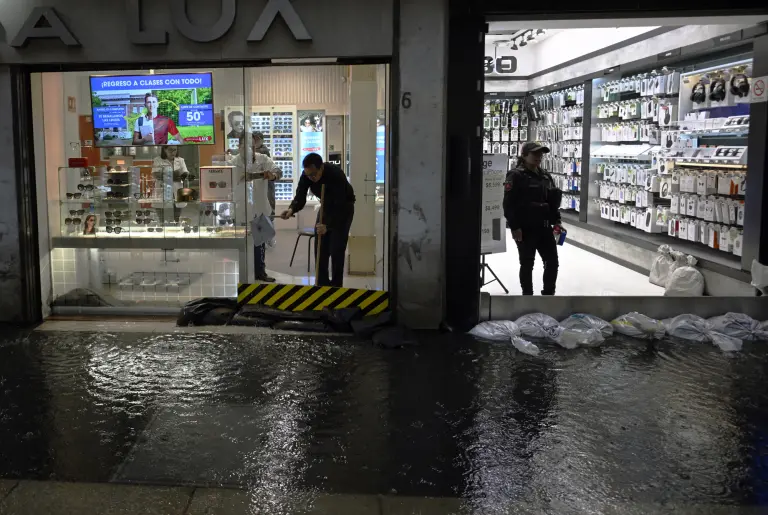Recent Heavy Rains Cause Chaos in Mexico City
Just a year after residents of Mexico City prayed to Tláloc, the Aztec rain god, for relief from scorching temperatures drying up reservoirs, capital dwellers are now pleading for mercy from relentless downpours.
In this metropolis of 9.2 million people, rainfall records are being shattered. The rains on the previous Sunday were the most abundant since 1952, according to official records.
Unusual Weather Patterns
Although the rainy season was expected to start in mid-June, there were a few sprinkles in spring. However, in August, when there’s typically a “mid-summer drought,” the downpours have been harsh.
- In the last week, these heavy rains caused flooding at Benito Juárez International Airport (where 45 million passengers travel annually), in the subway system, and numerous streets and homes.
- June was the third wettest month since 1985, according to Mexico’s National Water Commission (Conagua).
Climate Change’s Role
Experts consulted by AFP attribute these extreme variations to global warming alongside meteorological factors.
Mexico City has grown rapidly, with more buildings and fewer green spaces. Combined with the metropolitan area, which includes several neighboring municipalities, this zone is home to 22 million people.
Francisco Estrada, head of the Climate Change Research Program at Mexico’s National Autonomous University (UNAM), notes that “extremely heavy precipitation events” have become “more frequent,” along with “dry periods.”
Meteorological Factors
Mexico City is situated amidst the Sierra Madre Oriental, a mountain range stretching from the US border to central Mexico.
This range heats up during mornings, causing the upper air layer to increase in temperature. This generates water vapor in the afternoon, which then condenses and forms clouds up to nine kilometers that advance over the Valley of Mexico, where the 2.2-kilometer-high megacity is located, according to meteorologist Isidro Cano.
These clouds also produce a strong electrical field, explaining the powerful thunderstorms that have startled Mexico City residents.
The surrounding mountains form a favorable system for precipitation associated with this phenomenon.
- Waves of rain from the Caribbean Sea travel through the Yucatan Peninsula to the center before heading towards the Pacific.
- They leave “a trail of heavy precipitation,” which, combined with the orographic factor, has reinforced these rains, Cano explains.
Cano also warns that this process will generate more tropical storms and hurricanes in the coming years due to ocean warming.
Why are there Floods?
The ancient Mexicans or Aztecs built Tenochtitlan on a lake connected by several rivers.
However, over the centuries, this lakeside city was replaced by asphalt, increasing the risk of flooding since there’s little water filtration into the subsoil.

Negocios locales inundados en la calle Madero, CDMX.
Estrada warns that Mexico City’s infrastructure will be insufficient in the future to drain the increased volume of rainwater brought by climate change.
Authorities also attribute the flooding to trash accumulation in sewers, which, combined with maintenance issues, causes unpleasant odors in some areas.
Key Questions and Answers
- Q: Why are Mexico City’s rainfall records being broken? A: Rapid urbanization, fewer green spaces, and climate change have led to more intense rainfall events in Mexico City.
- Q: What role does climate change play in these extreme weather patterns? A: Global warming, along with meteorological factors, contributes to these extreme variations in rainfall.
- Q: How do meteorological factors influence Mexico City’s heavy rains? A: The Sierra Madre Oriental mountain range’s heating and cooling patterns, along with moisture-laden winds from the Caribbean Sea, create conditions for heavy precipitation in Mexico City.
- Q: Why are there floods in Mexico City despite its elevation? A: The city was built on a lake, and the replacement of this lakeside setting with asphalt has increased flood risks due to limited subsoil water filtration.
- Q: What challenges does Mexico City’s infrastructure face in handling future rainfall due to climate change? A: The current infrastructure may be insufficient to manage the increased volume of rainwater brought by climate change.






